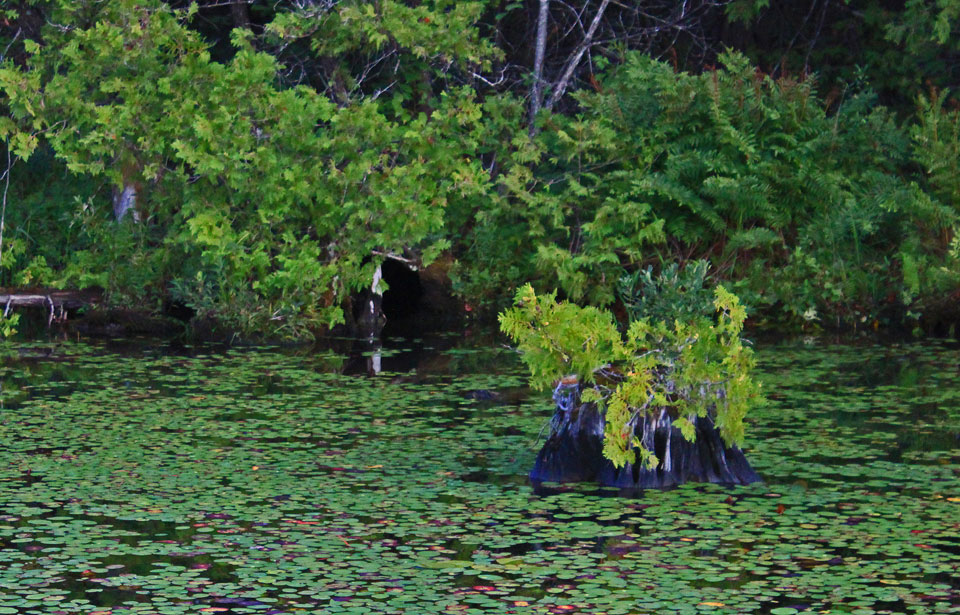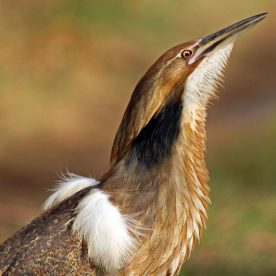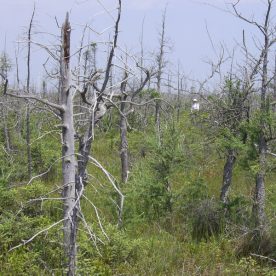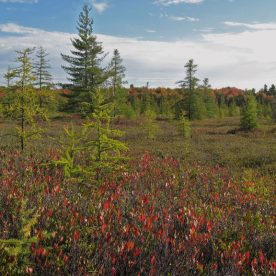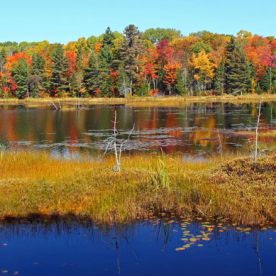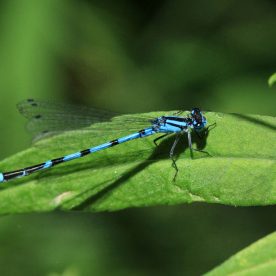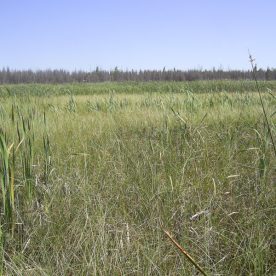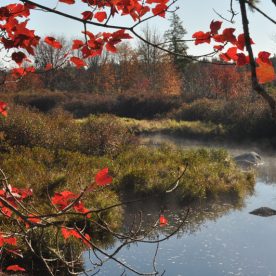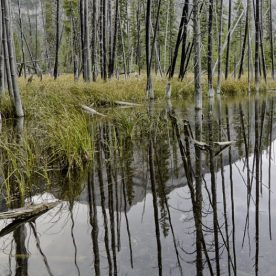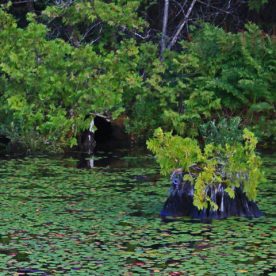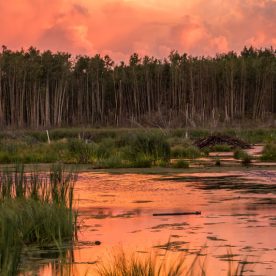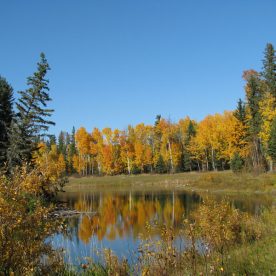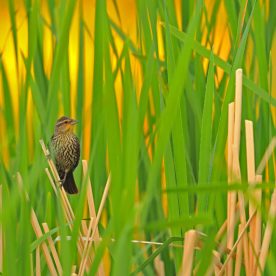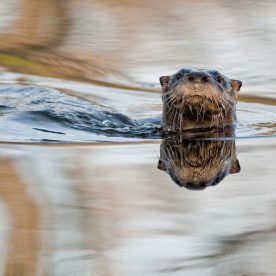What are wetlands? | Where are wetlands? | Types of wetlands | What good are wetlands? | Sustaining life | A threatened resource | What can we do? | Resources
Wetlands
- are rich in nutrients and teem with more life than most people suspect
- may be ponds, marshes, swamps, or peatbogs, each of which has its own characteristics
- act like giant sponges, soaking up rain and snowmelt and slowly releasing water in drier seasons, reducing flooding and easing the worst effects of drought
- are home for at least some part of the year for many fish, birds, and other animals. Without wetlands, some wildlife species would disappear
- are being destroyed across the country by industry, commerce, agriculture, and our appetite for “the good life”
What are wetlands?
Canada is famous for its innumerable lakes and rivers, but travel folders seldom mention its marshes, swamps, and bogs or the many small ponds or sloughs that dot large areas of the country. These are called wetlands—a precious but threatened part of our heritage.
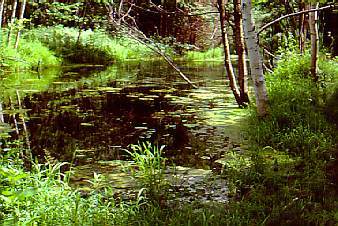
Canadian Wildlife Service photo
A wetland is simply any area of land that is covered with water for a part of the day or year. There are two classes of wetlands: freshwater and saltwater. The limits of freshwater wetlands are usually established in the spring, when water levels are highest because of melting snow and flooding. Summer droughts, evaporation, and infiltration will gradually cause the areas to dry up, sometimes completely. But even if wet for only a short time each year, the area is a wetland.
Saltwater wetlands, on the other hand, are usually caused by ocean tides. Some are flooded and dry up twice each day. Others are flooded only by particularly high tides that occur at less regular intervals.
Where are wetlands?
In Canada, wetlands are everywhere. They are found along the shores of oceans, lakes, and rivers, dotted across the prairies, and in countless poorly drained depressions in the Canadian shield. Look for them throughout river deltas and estuaries and near the shallow bays and inlets along our coasts.
Better known wetlands are the marshes in the Great Lakes basin, bordering Lake St. Clair and Lake Erie, and along the shores of the St. Lawrence River. Large areas of wetlands are found in the Peace-Athabasca River delta in northern Alberta and the Saskatchewan and Red River deltas in Manitoba. Noteworthy too are the peatlands of Newfoundland and Labrador and Vancouver Island and the large areas of muskeg in northern Canada.
The broad coastal areas of Hudson Bay and James Bay, the marshes at Kamouraska in Quebec, at Tintamarre in New Brunswick, and of the Fraser River estuary in British Columbia are among the better known saltwater wetlands.
But no wetlands are more remarkable than those of the prairie pothole region. This is an area of some 750 000 km2 stretching across southern Alberta, Saskatchewan, and Manitoba.
This vast region is pitted with millions of depressions that vary considerably in size and depth. In the spring these depressions fill with water from melting snow and rain. Some of the larger ones form lakes or other permanent bodies of water, but the smaller depressions form innumerable temporary sloughs or potholes, many of them drying up in only a few weeks.
Types of wetlands
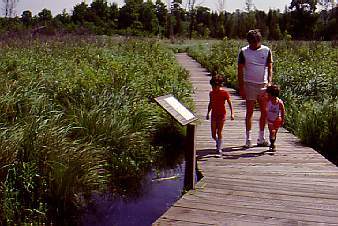
Canadian Wildlife Service photo
There are four major types of wetlands: ponds, marshes, swamps, and peatbogs. Each has its own characteristics.
A pond is a well-defined basin, filled with stagnant water and fringed with vegetation. It is fed mainly by rain and snowmelt and loses water through seepage, direct evaporation, and plant transpiration. During the summer, parts of a pond may dry out, exposing mudflats. The shallow depth of a pond allows water lilies and other bottom-rooted plants to reach the surface, while milfoils, pondweeds, and other submergent plants flourish beneath.
A marsh is subject to periodic flooding, particularly if located near a river or lake, or in the case of saltwater marshes, near tidal waters. Consequently, its water level can change drastically. Its boundaries are not as well defined as those of a pond, and a marsh may dry out completely by late summer. A marsh is overgrown with coarse grasses, sedges, and rushes.
The water-filled potholes and sloughs of the prairies may resemble ponds or marshes, depending on their characteristics and specific locations.
A swamp is essentially a wooded marsh, a waterlogged area supporting trees, tall shrubs, herbs, and mosses. Still or gently flowing water covers much of the surface during wetter seasons.
A peatbog is a poorly drained area covered by mats of moss. The moss slowly decomposes in successive layers to eventually form a material called peat. There are two types of peatbogs: bogs and fens. In bogs, the process of decomposition and peat formation is further advanced than in fens, making the soil and water more acidic. The most common moss found on the surface of a bog is sphagnum moss. Other bog plants are sedges and low-growing shrubs of the heath family and sometimes trees such as spruce.
In fens, sedges are the predominant vegetation and sphagnum moss is not common, although other mosses that require less acidic conditions may grow there. Fens also support reeds, grasses, and low-to-medium-height shrubs. Occasionally, too, there may be a sparse scattering of trees—tamarack or cedar. In northern Canada, a large expanse of bog or fen is called muskeg.
What good are wetlands?
It’s easy to regard wetlands as mere wastelands, of little or no value. We don’t build houses or factories in swamps, bogs, or marshes, and we don’t plant wheat or many other crops on land submerged in water. Wetlands are generally unsuitable for boating and swimming—in fact, for most human activities.
So it’s not surprising that many people “reclaim” our wetlands, by draining them or filling them in. To do so is a serious mistake.
Wetlands act like giant sponges, soaking up rain and snowmelt and slowly releasing water in drier seasons. Thus, they help to reduce floods and to ease the worst effects of drought. Draining ponds, sloughs, and marshes often lowers the water table and dries up wells. Wetlands also reduce soil erosion by checking or slowing the runoff from storms and thaws.
Without wetlands we would no longer have a ready supply of fresh drinking water. Much like our kidneys, wetlands filter the waters of our lakes, rivers, and streams, reducing pollution. The vegetation in wetlands removes phosphates and other plant nutrients washed in from the surrounding soil, thereby slowing the growth of algae and aquatic weeds. This growth is a serious problem in some of Canada’s major waterways where dead and decaying algae rob the deeper waters of their oxygen.
Wetlands are also the homes for at least some part of the year for many fish, birds, and other animals, meeting essential breeding, nesting, nursery, and feeding needs. Without wetlands, some wildlife species would disappear.
Wetlands contribute to the growth and economy of the country. Some of the smaller mammals, such as the beaver and muskrat, that dwell in wetlands are important to the fur trade, and the millions of game birds and fish reared in and around our wetlands support a growing recreation and tourist industry.
Sustaining life
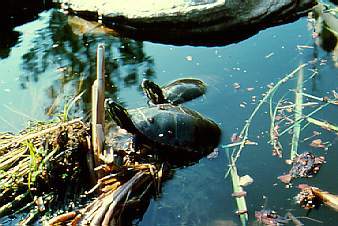
Canadian Wildlife Service photo
Creatures large and small
A wetland who’s who would list many creatures, ranging in size from the microscopic one-celled protozoa to the massive moose. Some are born and live out their entire lives in wetlands; others spend only part of each day or a part of their life there.
Wetlands are the whole world for many salamanders, snakes, turtles, and aquatic insects. On the other hand, many of our frogs, toads, and tree frogs breed in temporary ponds and marshes but spend much of their adult life on the surrounding dry land. Fish, such as stickleback and pike, come to marshes to spawn and feed in the shallow waters.
Among the smaller mammals living around the marsh are shrews, lemmings, voles, muskrats, and beavers. Predators include mink, otters, bobcats, and the elusive cougar and grey fox.
But wetlands are especially a boon for birds. More than 100 species inhabit or make use of Canada’s marshes, swamps, and sloughs. Some, like the Swamp Sparrow and Marsh Wren, nest there almost exclusively. Many millions of ducks, geese, gulls, and other waterfowl also nest, breed, and feed there along with numerous waders and shorebirds-herons, bitterns, rails, and sandpipers.
Kingfishers, owls, Ospreys, and other predators feed in wetlands. Birds such as mallards and teals use wetlands while moulting because marshy areas provide excellent escape cover. Sandhill Cranes, geese, and Tundra Swans stop over in marshes during migration, to rest and feed and to regain their strength.
Waters of life
Wetlands are rich in nutrients and teem with more life than most people suspect. Billions of microscopic algae and larger plants grow and flourish in the shallow waters, using the sun’s energy to produce and reproduce their substance. They serve as food for countless forms of animal life, and these in turn are often consumed by birds and other animals.
Bacteria and fungi are at work everywhere, breaking down dead plant and animal tissues and releasing nutrients for further use. In rivers, streams, and most lakes the constant flow of water washes away many of these nutrients. But in marshes, sloughs, and other wetlands, nutrients tend to remain and accumulate. In northern regions, where water levels are relatively stable, nutrients often become trapped in the bottom sediments; but in southern regions they are released each year during spring flooding. This is one of the reasons why wetlands in southern regions are so productive and why they attract so many forms of wildlife.
The bottom sediments consist of decayed material, tiny shell fragments, and other such leftovers, deposited over a layer of organic and mineral soil. Beneath this, again, is a layer of clay or other impervious material. Among the bottom-dwellers are snails and mayfly larvae. They feed on decaying material and bacteria and, in turn, are a major food source for many ducks and other animals.
So, too, are the free-swimming larvae of dragonflies and damselflies, which themselves prey on waterfleas, fairy shrimps, mosquito larvae, and other tiny creatures. Other free swimmers are water mites, often preyed upon by the diving beetle and the giant water bug.
As wetlands dry up or fill with water, changes also occur in the plant and animal life associated with them. Falling water levels bring simpler communities with fewer species, as marsh vegetation dies off and many birds and other animals depart. Rising water levels also cause die-offs of some bulrushes and other plants. Such changes in vegetation affect the wildlife that depends upon it.
A threatened resource
The natural, reversible changes in wetlands may be almost insignificant compared with the disruption caused by human interference. Dredging a pond can make it unsuitable for birds that require shallow water. Draining or filling in wetlands permanently destroys entire communities of plants and wildlife. Burning off or cutting down surrounding weeds, brush, or other vegetation eliminates, at least temporarily, vital nesting places and escape cover. Building a highway through a coastal marsh or erecting a small dock at the marshy edge of a lake where you moor your rowboat is also damaging.
Air and water pollution are serious problems. Insecticides, weed killers, and industrial wastes take a heavy toll on plants, fish, and other wildlife.
This destruction is happening all across the country, as industry, commerce, agriculture, and our appetite for “the good life” continue to swallow up our wetlands. In southwestern Ontario, the marshes bordering Lake St. Clair have shrunk to only a fraction of what they were. On the prairies, millions of hectares have been drained and put to the plough—not only destroying wildlife habitat, but frequently also lowering the water table. Everywhere bogs and other wetlands are regarded as prime dumping sites of garbage and other refuse.
Naturalists, ecologists, and many other people are concerned about this trend. And millions more are realizing that this kind of “progress” threatens our world with impoverishment. Could we enjoy the truly good life in a land without wild places and without wildlife?
What can we do?
Changing public attitudes is the essential first step in preserving our wetlands. We have to get rid of the mistaken notion that wetlands are wastelands, and help other people to do the same. Then let’s get behind our governments, conservation groups, and other agencies in their efforts to save those important resources.
Governments at all levels have an important part to play—for example, by the acquisition of wetlands for parks, sanctuaries, and reserves. At the federal level, on a limited scale, the Canadian Wildlife Service is already doing this through its habitat program and has created specially protected National Wildlife Areas across the country. Wetlands can also be protected by provincial regulation and municipal zoning, and through compensation, tax concessions, and other incentives to farmers and other property owners.
Private citizens can do something too, as individuals or as members of service clubs, conservation groups, and other organizations. Contact your regional Canadian Wildlife Service office for more information on wetlands and on organizations in your area working to preserve these valuable habitats.
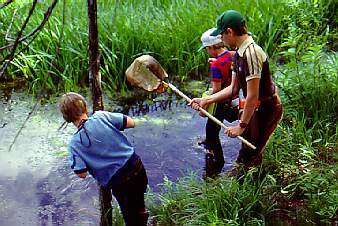
Canadian Wildlife Service photo
Landowners can donate their wetlands to government or private agencies to preserve the habitat. Other citizens can pool their resources to lease or to purchase and protect wetlands, while sponsoring or supporting much-needed programs of public education. To ease the pressure to drain and develop wetlands, we must promote the wiser use of land for agriculture and other purposes.
Resourceful farmers have learned to use wetlands without destroying them. In some places, fish-farming in sloughs or marshes is a profitable venture.
The Canadian Wildlife Federation is heavily involved in water and wetlands protection. Learn more about water protection and issues.
It is also possible to restore wetlands or create new ones. The Federation of Ontario Naturalists (Toronto) has published instructions on “How to build a marsh,” and in many places a private pond is just as feasible as a backyard swimming pool.
It’s easier to protect one wetland now than to restore or recreate one later. “Later” may be too late.
The Ecological Gifts Program
Since 1995, Canada’s Ecological Gifts Program has encouraged landowners to conserve ecologically sensitive land by donating it to a qualified recipient. Donors know that their land will be cared for, and they also receive significant income tax benefits. For more information visit the Canadian Wildlife Service Web site or call 1-800-668-6767.
Resources
Print resources
Lands Directorate. 1986. Wetlands in Canada: a valuable resource. Fact Sheet 86-4. Environment Canada, Ottawa.
National Wetlands Working Group. 1987. The Canadian wetland classification system. Ecological land classification series, no. 21. Lands Directorate, Canadian Wildlife Service, Environment Canada, Ottawa.
National Wetlands Working Group. 1988. Wetlands of Canada. Ecological land classification series, no. 24. Sustainable Development Branch, Environment Canada, Ottawa, and Polyscience Publications Inc., Montreal.
© Her Majesty the Queen in Right of Canada, represented by the Minister of the Environment, 1980, 1989, 1999, 2002. All rights reserved.
Catalogue number CW69-4/75-2002E
ISBN 0-662-31806-4
Photo: Canadian Wildlife Service
![]()



